Big Bang: The Most Important Scientific Discovery of All Time and Why You Need to Know About It
£12.30
The bestselling author of Fermat’s Last Theorem and The Code Book tells the story of the brilliant minds that deciphered the mysteries of the Big Bang. A fascinating exploration of the ultimate question: how was our universe created?
Albert Einstein once said: ‘The most incomprehensible thing about the universe is that it is comprehensible.’ Simon Singh believes geniuses like Einstein are not the only people able to grasp the physics that govern the universe. We all can.
As well as explaining what the Big Bang theory actually is and why cosmologists believe it is an accurate description of the origins of the universe, this book is also the fascinating story of the scientists who fought against the established idea of an eternal and unchanging universe. Simon Singh, renowned for making difficult ideas much less daunting than they first seem, is the perfect guide for this journey.
Everybody has heard of the Big Bang Theory. But how many of us can actually claim to understand it? With characteristic clarity and a narrative peppered with anecdotes and personal histories of those who have struggled to understand creation, Simon Singh has written the story of the most important theory ever.
Read more
Additional information
| Publisher | HarperPerennial, New Edition (27 April 2005) |
|---|---|
| Language | English |
| Paperback | 562 pages |
| ISBN-10 | 9780007152520 |
| ISBN-13 | 978-0007152520 |
| Dimensions | 12.9 x 3.58 x 19.71 cm |

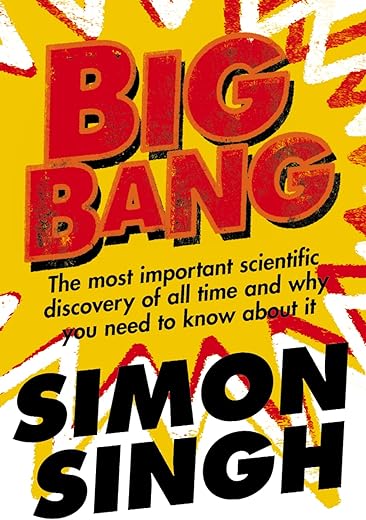
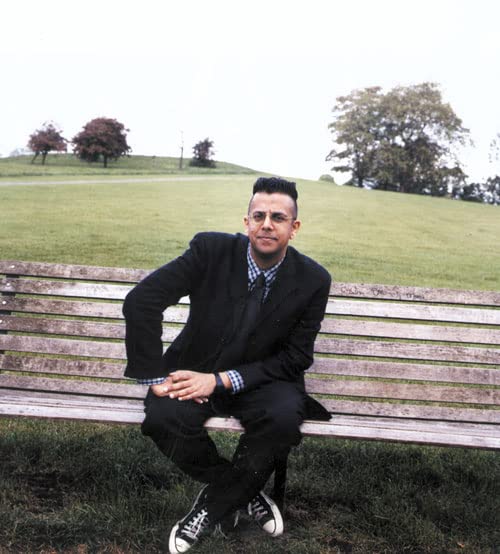




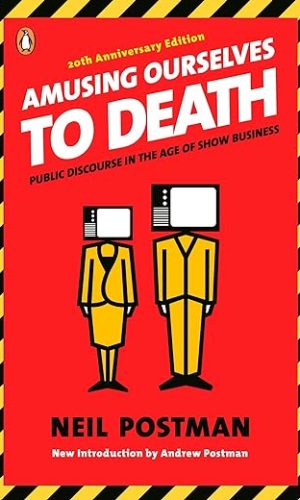
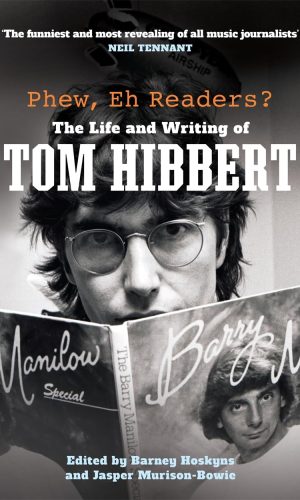
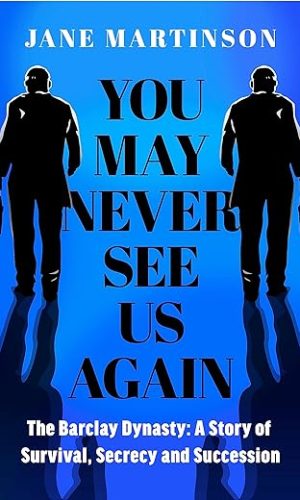
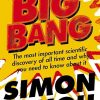
by Roger
This brilliant book by Simon Singh, first published in 2004, seeks to explain the theories that have existed since ancient times until the modern day concerning the structure, age and creation of the universe. Singh has an easygoing style of writing and having said what he wants to say he will often summarise the remarks he has made, thus making sure he has been fully understood and that the reader is keeping up to speed. Also, rather than just discuss the cold scientific facts, he brings the subject to life by describing the personalities involved, and the challenges they faced in their attempts to solve the mysteries of the cosmos. Each chapter also ends with a helpful two page “handwritten” summary covering the salient points.
He starts the book by addressing the place of the earth in the big scheme of things, going through the various early theories where the earth was at the centre of everything. Interestingly, in the third century BC the ancient Greek astronomer Aristarchus had worked out that it was the earth that moved around the sun and not the other way around, but he lost out to the views of heavyweights Aristotle and Ptolemy who had both favoured a geocentric model. In fact, logic and common sense seemed to rule out the idea of the earth orbiting the sun, for reasons such as if the earth was travelling through space at great speed we would feel a tremendous wind and would be knocked off our feet as the ground moved under us. Not to mention that placing the earth at the centre of the universe was a useful way of explaining gravity in that everything was attracted to this centre point. The geocentric view prevailed for many centuries, this position also suiting the early church who stood steadfast against anyone proposing something different. But, eventually, through the determined efforts of Copernicus, Tycho Brahe and Galileo in the 16th century, science won through and the church was forced to accept the heliocentric layout of the solar system.
Singh discusses the speed of light and the postulated existence, or otherwise, of the ether. I was surprised to read that it was as early as 1670 when the Danish astronomer, Ole Rømer, first recognised that light had a finite speed and he made a not unreasonable estimate of this speed based on calculations of apparent anomalies in the orbit of one of the moons of Jupiter. Of course, of critical importance in understanding light was Einstein’s contribution, which led to the development of his special theory of relativity. Singh’s account naturally progresses to Einstein’s general theory of relativity and to his view that the universe was static, although he did need to add a cosmological constant to his general relativity theory to support this conjecture. But shortly afterwards saw the (then) unpopular, and independently developed, theories of Friedman and Lemaître which proposed an expanding universe, with Lemaître being the first to recognise that if the universe was expanding then it must once have been smaller, and once probably minute – hence he was the first to hint at a big bang theory although he called it the primaeval atom. Lemaître also had the distinction of being both a physicist and an ordained priest, so he can be thought of as having hedged his bet when it came to theories of creation.
Next, Singh discusses the discovery in the early 20th century that many of the so-called nebulae that were visible through telescopes were actually far away galaxies, and not, as some thought, merely objects within our own Milky Way galaxy. Further research, notably by Hubble, showed that most of these galaxies were moving away from earth, and the further they were away, the faster they were moving. Experimental evidence had thus been found for the expansion of the universe and therefore, as a corollary, an initiation in a big bang, thus opening the way to a proper Big Bang theory.
But, moving on, Singh notes that this incipient Big Bang theory had problems. For example, it couldn’t account for how the heavy chemical elements had formed. George Gamow had led efforts that succeeded in explaining how the heat of the big bang would have led to the fusion of proton and neutrons, leading to the formation of helium in the proportion that it is present in the universe today. But he couldn’t explain the formation of the heavier elements. Another issue was the age of the universe, because using the estimated speeds and distances of far away galaxies, it seemed that the universe was younger than the age of the earth, as calculated from radioactivity measurements. In the 1940s, Fred Hoyle, along with others, proposed an alternative to the Big Bang theory by suggesting a Steady State model in which the universe was expanding but where new matter was continually being created in the gaps between the old galaxies. The discrepancies in the age of the earth and the universe were less of a problem for this theory but it still had its own difficulties. It couldn’t, for instance, account for the formation of any of the elements, not even helium. Throughout his life, Hoyle remained very critical of the Big Bang Theory and ironically it was he who coined the term “Big Bang”, although it was intended to be derogatory.
The battle between the Big Bang and Steady State theories continued but slowly the ground moved in favour of the former. Successive discoveries uncovered errors in estimates of the size of the universe, and hence its age, and it was shown that the universe was indeed older than the earth, which was a welcome boost for the Big Bangers. Then, by calculating the pressures and temperatures expected to be found in stars during their life cycles, Hoyle was successful in theorising how the heavier elements could have formed from helium. Although Hoyle was a Steady Stater, his research had helped both camps. Then radio astronomy was successful in finding younger galaxies at the far reaches of the universe – their absence in the closer parts of the universe contradicted the predictions of the Steady State model, adding further weight to the Big Bang theory. The final nail in the coffin for the Steady State argument was the accidental discovery of cosmic microwave background radiation by Penzias and Wilson. Big Bang theorists had predicted the presence of this radiation, which dates back to about 300,000 years after the initiation of the universe, and they had been proved right. In the 1990s, equipment on the COBE satellite detected minor variations in the background radiation, which are thought to reflect minor variations in the density of the early universe, which in turn provided the seeds for the growth of the galaxies.
Curiously, it’s only at the end of the book, in an epilogue, that Singh talks about more contentious issues, including inflation, dark matter and dark energy. I was a little puzzled as to why this wasn’t incorporated into main text but this is only a minor issue and it doesn’t detract from the general flow.
Much of the scientific information in the book I knew already but it was still refreshing and entertaining to see it presented in its historical context, and to read of the struggles by those involved in formulating and then attempting to prove the various theories. For a simple, non-mathematical introduction to cosmology, I think this book is difficult to beat.
by Mr. J. Hastings
This is a very interesting and comprehensive account of the developments in science that led to the Big Bang theory of the origin of the Universe. Along the way it gives the reader an understanding of how science works. It is clear that an awful lot of work (background reading, travelling and interviewing as well as writing a book of over 500 pages) went into this book.
On the other hand, I do not think Simon Singh has answered the statement that forms the second half of his subtitle, “why you need to know about it.” Why should we need to know about it? Most of us simply get on with our everyday lives, work and leisure without giving the Big Bang a moment’s thought. And why should we? Singh does not even address this question. Of course, it is a fascinating subject; that is why so many astronomers and theoreticians have devoted their lives to answering the question. But what influence should it have on us?
In the early 1960s I was a Physics undergraduate, so I was reading about Quasars, Fred Hoyle’s Steady State Theory and Penzias and Wilson discovering the Cosmic Microwave Background as they happened. When I first read about Hoyle’s theory, I wasn’t yet sold on the Big Bang, but I was suspicious of Hoyle’s Creation Field (C-Field). It seemed like an ad hoc hypothesis with no evidence behind it.
It seems to me that Singh has omitted two important points from the Galileo affair. First, in his “Dialogues on the Two Great World Systems” Galileo was arguing for the Copernican Sun-centred model. This model was already obsolete in 1632 because, over twenty years earlier, Kepler had demonstrated that the planets move in ellipses at varying speeds around the Sun, rather than in circles at constant speed as maintained by Copernicus. Galileo and Kepler corresponded with each other so it is surprising that Galileo was able to write that the orbit of Mars was still a problem for astronomers even though Kepler had solved that problem.
Secondly, although Galileo had observed the phases of Venus which proved that that planet orbited the Sun, he had no evidence that the Earth itself actually moved. He thought that he had. His theory, as explained in the “Dialogues”, was that the tides were caused by the waters of the seas sometimes falling behind as the Earth rotated and sometimes running ahead. However, this theory contradicted his earlier explanation of why we are not aware of the Earth rotating. He argued, correctly, that everything on and related to the Earth shared in its rotation and movement around the Sun. “Everything” of course included the water of the seas and the air.
However, this is a book well worth reading and even keeping and re-reading.